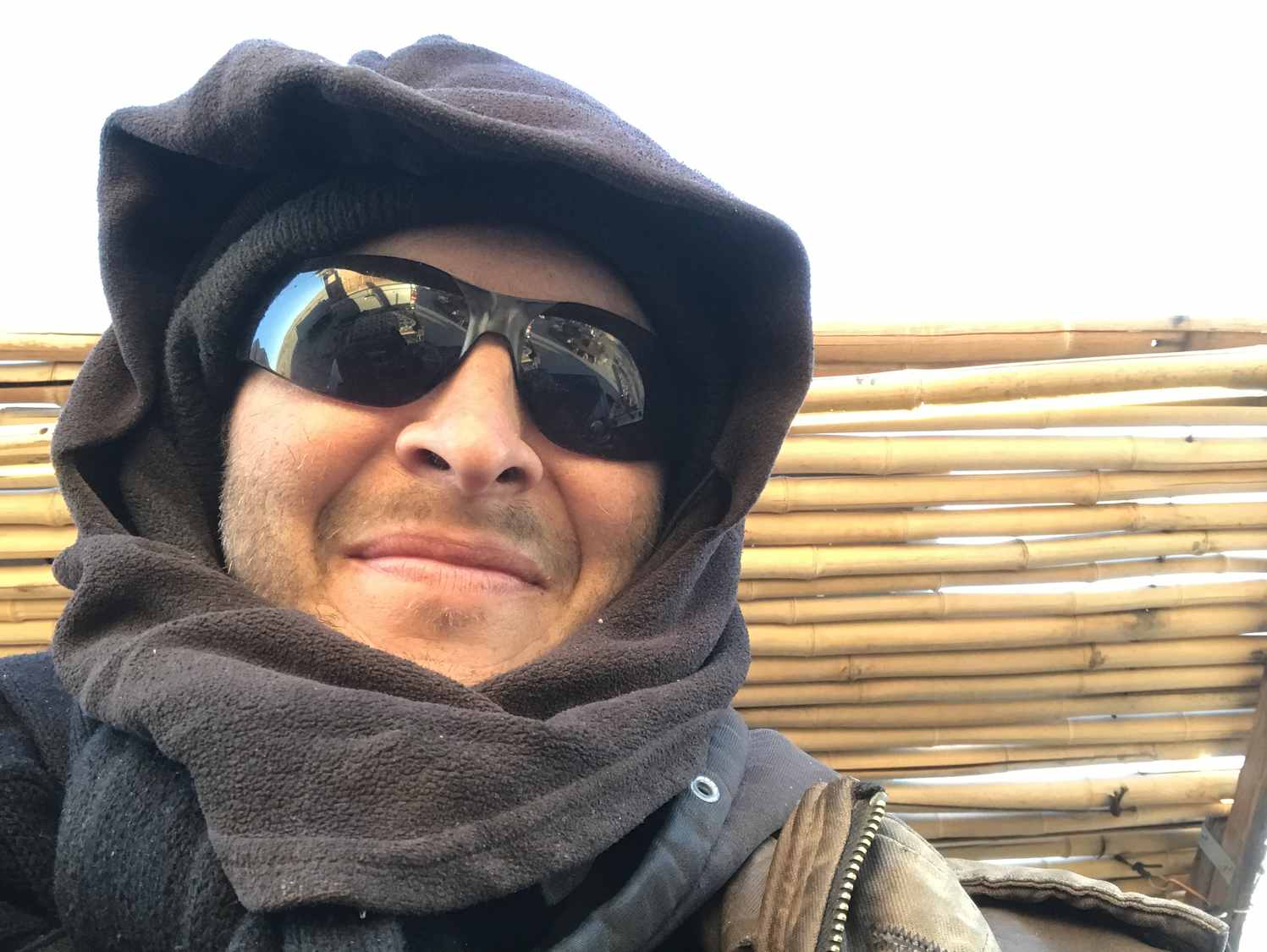
Staying Warm With Several Layers Of Clothes In The Winter
I've managed to find a sustainable strategy for staying warm in the winter months without any form of heating other than the furnace of my own metabolism. Whether in the snow, the frost, or freezing winds, I've found that by several loose fitting layers to catch and store my body heat, I can be very comfortable. At my current location here's how my winter clothing strategy works from head to toe: 2 "beanie" caps, one hood/mask, if needed another ear covering thick hat; then a sweater adapted into a scarf, then a long sleeve shirt as a base layer, then 3 thermal shirts above that, then a hooded sweatshirt above that, and a hooded winter jacket above (both hoods get added to the hats as needed); then fingerless gloves which if needed get covered by larger outer full size winter gloves, then boxer briefs covered by 3 layers of thermal pants, and when needed an outer layer of wool army pants; then 1-3 pairs of socks, that will drop down to 1 or 2 when the tactical boots are on.
As you can imagine, depending on the activity, the wind chill, the time of day or night, etc. I'll be adding and removing layers again and again. I have a whole stack of layers to manage but it's worth it to have the ability to have such fine granularity. It's extremely important to avoid dampening the layers with sweat so with almost any continuous activity even if doesn't seem to be very hard work, I've got to be sure to drop layers accordingly. Once in a while a task will be so immediate that I don't have time to drop layers in an optimal manner, an internal alarm goes off quickly though once I sense perspiration. I start to feel sticky and hot, and I know that's going to degrade my hygiene, force me to wash the clothes sooner than I'd like, and when there's not enough sun to dry them quickly. As soon as I completely the immediate task, I'll drop the layers as fast as I can, being careful not to rip them, and even in freezing cold whether get them aired out as much as possible and even towel off any areas on my skin that have gotten moist.
I find that if I sweat at all in my layers, my scalp will get itchy and nasty really fast so I'll even give myself a quick scalp wash with soap and hope the wind will dry it. I've done fine so far, it's a bit of unpleasantness, but then, since I worked up the heat in the first place, it's not so bad. A bit of minimal and controlled cold exposure can be a bit of a mood elevation tool once in a while. You'll definitely know you're alive.
As far as bedding in the winter, I've learned that while in some situations less clothing layers are better than more, it all depends on your bedding. For me, what's worked best is to sleep in all of my clothing layers minus the wool pants, and use 3 wool blankets and 4 canvas drop cloths all sewn together. This last winter I added the 4 layers of canvas and that allowed me to remove the wool pants which were very uncomfortable to sleep in as they very inflexible. This last winter was probably one of the most comfortable of my life. It's impossible the measure the psychological value of being as close to the elements as I am. I'm as exposed to the elements as you can possibly be without letting them kill you. With bamboo fence walls and a corrugated metal roof, covering the back of a truck, I have just enough shelter from the sun, just enough shelter from wild animals, and just enough shelter from the sand and wind storms to survive. I hear all the rain drops, I get pushed around by the wind, and what would other wise be a solar death sentence is shaded an all sides and always just a few feet away. It's humbling and invigorating to be such a minimalist. It makes me appreciate the magic of biology that with a bit of designer buffering, we're adapted to cope with extreme weather conditions. It's become a past time for me to discover how close to the edge of pure wildness I can survive and thrive. Looking back on all of the modern heating and cooling systems that rely on unsustainable energy sources and toxic materials, I'm glad to be able to find a way back to nature with less and less toxic materials and energy sources, and more and more natural materials and strategies for moderating temperatures at a micro scale using clean and green solutions. I'm not 100% percent there yet, I still have a long way to go, however every step along the way is very rewarding.